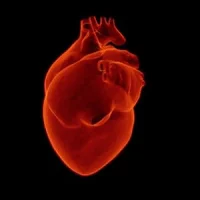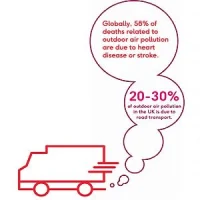A higher waist‐to‐hip ratio (WHR) was associated with a higher risk of death in female but not in male patients with heart failure (HF), according to new research published in the European Journal of Heart Failure. These findings challenge the obesity paradox, and suggest that fat deposition is pathophysiologically harmful and may be a target for therapy in female HF patients.
Obesity is a risk factor for the development of heart failure, but in patients with established HF a higher body mass index (BMI) is associated with a lower risk of death. This so-called obesity paradox describes improved survival rates in HF patients with a BMI between 25–35 kg/m2 compared with normal or underweight HF patients. However, patients with a high BMI might be misclassified as HF due to dyspnoea. In addition, BMI fails to account for body composition, including fat distribution and fluid in the third space.
This study therefore aimed to analyse the association between abdominal fat (measured via WHR), BMI and all‐cause mortality in patients with HF. For this analysis, 1,738 patients from the Scottish BIOlogy Study to TAilored Treatment in Chronic Heart Failure (BIOSTAT‐CHF) validation study were included. Patients without waist and hip measurements were excluded. WHR was defined as waist circumference/hip circumference, divided into tertiles and split for sex. A linear regression of principal components from an extensive panel of biomarkers was performed to provide insight in the pathophysiology behind a higher WHR.
In total, the study cohort consisted of 1,479 patients (33% were female; mean age was 75 ± 11 years). A higher WHR was independently associated with a higher BMI, a higher prevalence of diabetes and higher New York Heart Association functional class. Moreover, researchers observed a significant interaction between sex and WHR on its association with mortality (P <0.001). In women, a higher WHR was associated with a higher mortality risk [hazard ratio (HR) 2.23, 95% confidence interval (CI) 1.37–3.63; P =0.001], whereas no significant association was found in men (HR 0.87, 95% CI 0.63–1.20; P = 0.409).
The study found a strong association between a higher WHR and elevated markers of inflammation and mitogen-activated protein kinase (MAPK) cascade in women, while these associations were less profound in men. "As is known, the MAPK cascade is often involved in cardiac remodelling and vascular disease. A variety of different cascades play a role in hypertrophy and pathological remodelling, and are known to be associated with worse outcomes," the researchers explain. "The same holds true for the process of inflammation, which is known to be associated with HF, especially HFpEF [HF with preserved ejection fraction]."
The results also showed that both women and men with a lower BMI and a higher WHR had the highest all-cause mortality risk.
"When assessing WHR, not only waist circumference is used, but by using WHR one might discriminate more accurately between abdominal fat (large waist circumference, normal/small hip circumference) and merely a larger body size (large waist circumference and large hip circumference)," the researchers say. "In the present study, we showed that fat distribution matters, where an increase in WHR in patients with HF is associated with a gradual increase in the risk of death, and that this was more pronounced in women."
This study is limited by its retrospective nature. Additionally, in patients with HF and a large abdominal mass, it is difficult to distinguish between fat and fluid, according to the research team.
Image Credit: Pixabay
References:
Streng KW, Voors AA, Hillege HL et al. (2018) Waist‐to‐hip ratio and mortality in heart failure. Eur J Heart Fail. First published: 02 July 2018. https://doi.org/10.1002/ejhf.1244
Latest Articles
heart failure, waist‐to‐hip ratio, WHR
A higher waist‐to‐hip ratio (WHR) was associated with a higher risk of death in female but not in male patients with heart failure (HF), according to new research published in the European Journal of Heart Failure. These findings challenge the obesity par










